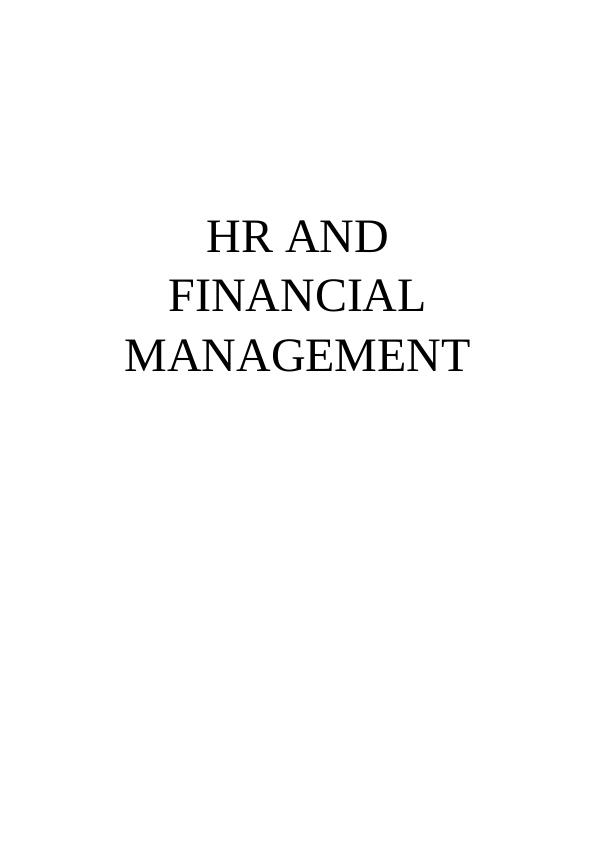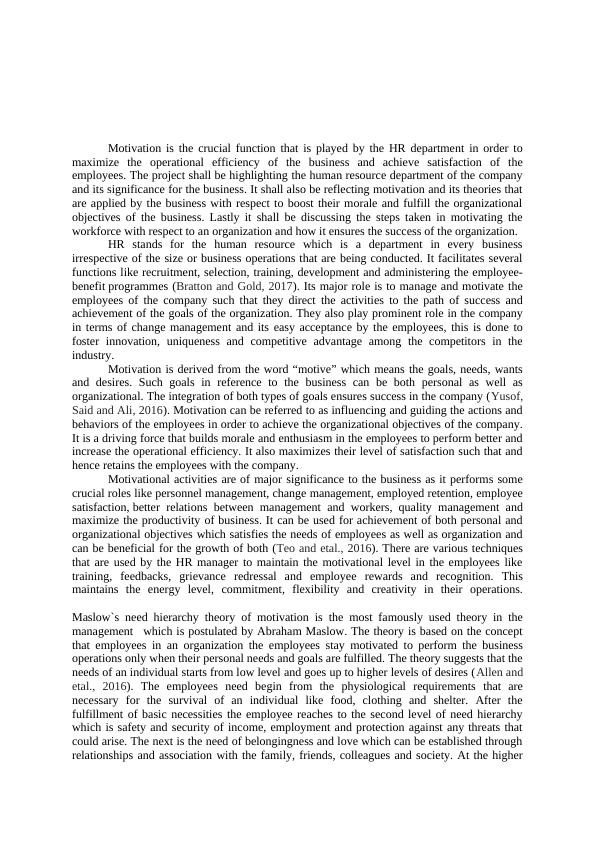HR and Financial Management
7 Pages2881 Words76 Views
Added on 2022-12-28
About This Document
This document discusses the significance of HR department in maximizing operational efficiency and employee satisfaction. It explores motivation theories and steps taken to motivate the workforce. It also provides an understanding of financial management, its importance, and the role of a finance manager. Additionally, it suggests various sources of finance for short-term and long-term needs.
HR and Financial Management
Added on 2022-12-28
ShareRelated Documents
End of preview
Want to access all the pages? Upload your documents or become a member.
Motivation and its Significance in Human Resource Management
|6
|1275
|24
Understanding Why People Work
|8
|2044
|99
Introduction to People Management
|11
|2934
|42
HRM261 - Essay on Process Theories of Motivation
|6
|1381
|138
Motivation Theories for Tesco's New Store 'Jack'
|7
|1397
|400
Human Resource Management Practices in Marks and Spencer Company
|6
|1317
|40



